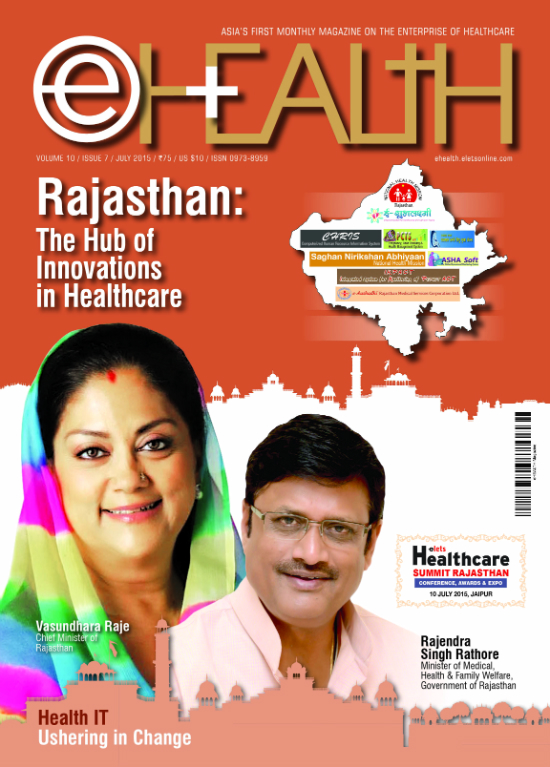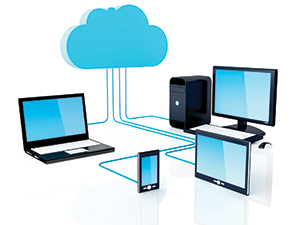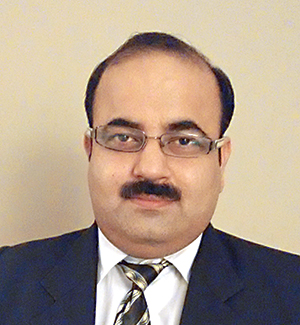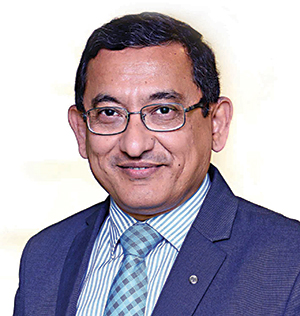Indian healthcare providers must exploit the early entrant advantage otherwise countries like Thailand will overtake us in the years to come, says U K Ananthapadmanabhan, Group President, Rainbow Hospitals, Hyderabad
Indian healthcare industry traditionally has been a slow adopter of information technology when compared to other industries like banking,manufacturing, retail and education.Until last decade, healthcare providersprimary focus has been on automation of back-office systems, reimbursement methods and regulatory compliance and accreditation requirements. IT budgets have been very low as they were not considered as a part of infrastructure and had to compete with other priorities like radiology equipment and hospital expansion. Today IT in a hospital has become as important as a stethoscope to a doctor. It is all pervasive and has become an inseparable part of any care provider,be it a doctor or a nurse.

Cloud Computing
Cloud computing is transforming the way we are consuming technology.It should be better understood as the use of computing resources both hardware and software that are delivered as a service over a network.It can be Infrastructure as a Service(IaaS), or Platform as a Service(PaaS), or Software as a Service(SaaS). Deployment can be done in three different ways as Private,Public and Hybrid clouds combining two or more clouds (private or public) that remain unique entities but are bound together by technology that enables data and application portability.
Key Characteristics

- Measured service: IT infrastructure and applications are delivered and consumed as a service over the network.
- Rapid elasticity and homogeneity:Services operate consistently,Regardless of the underlying systems. Capacity and performance scale to meet demand and are invoiced by use.
- Multi-tenancy and resource pooling: Services are shared across multiple organizations,allowing the same underlying systems and applications to meet the demands of a variety of interests, simultaneously and securely.
- Location independence and ubiquitous network access: Applications, services, and data can be accessed through a wide range of connected devices (e.g.,smart phones, laptops, and other mobile internet devices) at anytime and any place using high band width connectivity.
Benefits Elasticity:
Elastic (unlimited) public cloud scaling can handle traffic bursts. No need to our provision,cloud CPUs scale according to traffic. Conceptualising, architecting and deploying IT solutions in a healthcare setting do not need to be a long drawn- out process. Solutions can be built quickly using cloud-based platforms that are already HIPAA compliant.For example, Rainbow hospitals group, Hyderabad moved all their applications in eight hospitals (800 in patients 1000 outpatient a day) to the cloud within nine months. It gave real time access on a dashboard from any place and from any device be it a desktop, laptop, tablet or smartphone.This was the highlight of the recently launched IT transformational project titled Rainbow Digital. Rapid expansion IT resources was possible for existing healthcare facilities.In new healthcare facilities, IT resources like hardware, software was rolled out at very short notice as less as seven days.
Low cost:
Cloud computing empowers providers to only pay for what they need. It helps the hospitals and healthcare providers to use the applications, hardware, and services on a pay per use model, which allows them to avoid heavy capital expenditure on buying and deploying expensive technology.
Ease of Maintenance:
IT expertise for in-house infrastructure maintenance is very difficult to obtain for healthcare institutions since IT personnel prefer to work for IT companies to IT departments in healthcare institutions. Therefore,many organisations have started to out source the maintenance of in-house IT infrastructure to agencies that have specialised knowledge on maintenance IT networks and desktops. The maintenance of infrastructure facilities like air conditioning, power, air-quality, and operating system for the hardware is shifted to the cloud service provider.
Risks and Challenges
Cloud computing may not be the panacea for all the ills in the healthcare IT. Although most of the hardware,software and the specialised expertise available in the established data centers are superior to those are available on hospital premises. The touch and feel of the servers are not available for the IT personnel and the end-users, which sometimes seem to erode the confidence of the IT staff and the top management, on cloud based systems. IT managers of Indian hospitals have not still come to terms with huge impact of emerging cloud and mobile technologies. They need to unlearn and relearn and hone their software skills as winds of change are blowing very fast in their field.The Internet-of-Things (IoT), robotic technologies and virtual desk tops may become the order of the day in the next five years all being operated from the cloud. If they fail to see the writing on the wall and come to terms with rapidly growing mobile and cloud technologies they may professionally fade away sooner than they expect.
Although, cloud offers immense benefits in terms of costs, agility,efficiency and scalability, there are inherent risks like data centre vendors compliance of service level agreements (SLA), data security at data centres and also the reliability of the networks service providers. Many a times the escalation matrix in times of crisis seemed to be more on paper than in action and practice and during night times and holidays and the service delays can be very frustrating.
Security and Privacy
There is no health insurance portability and accountability act (HIPPA) in India, but the indications are that the government is exploring process of putting up a regulatory framework in place. Most healthcare organisations push back on cloud computing as they believe that their data is on an outside infrastructure and it is not secure. On the contrary,the cloud can be as secure and convenient as data on their own premises provided they do enough planning, properly configure and manage their set ups well. In large hospital chains with number of units located geographically in distant places, managing data on premises is becoming very difficult and a unviable proposition in terms of availability, dependability andcost of IT expertise, hardware and software resources. It would be easier to protect the data in a central data centre with highly professional and specialised team rather than protecting the data servers in multiple and distant places.
The exponential growth of ICT technologies will open up great opportunities as well as challenges for Indian healthcare industry
Conclusion
India with its highly qualified and trained medical expertise, state-of-the-art medical facilities and with its huge cost advantage is fast emerging as the medical tourism hub for the world. Domestic medical industry is also growing at about 15 percent, much ahead of the GDP of the country. The exponential growth of ICT technologies will open up great opportunities as well as challenges for Indian healthcare industry. It is estimated that the cloud based technologies alone will offer about US$ 241 billion business by the year 2020 and India can surely benefit by it being the power house for the world in the IT sector. Our care providers,technologists and hospital promoters must learn to align their goals with emerging disruptive technologies being the power house for the world in the IT sector. Our care providers,must exploit the early entrant advantage otherwise countries like Thailand will overtake us in the years to come.
Be a part of Elets Collaborative Initiatives. Join Us for Upcoming Events and explore business opportunities. Like us on Facebook , connect with us on LinkedIn and follow us on Twitter , Instagram.












